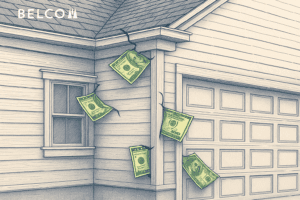Wood is an extremely durable material. Preservative treated wood is protected from the sun, moisture, living organisms, and insects when properly dried, finished, and sealed. As a result, wood products last for decades. Preservative treated wood means a safer wood preservative method.
If wood is not properly protected from the elements; this durable material degrades rapidly . There are certain species, like cedar, that are naturally resistant to rot. Humans have been using technology for millennia to try and preserve wood beyond its normal lifespan. This was the advent of preservative-treated wood; wood treated in some way to protect it from rot and extend its life.
There are records from ancient Greece that mention wood bridges soaked in olive oil, and the Romans coated the exterior of their wood ships with hot tar. This technology didn’t change a lot until the Industrial Revolution when new methods for wood preservation began development.
The first filed patent for a wood preservative treatment was in 1716. Since then, the search for extra years of life from exterior lumber have enjoyed varying degrees of success.
Preserving Wood With Safer Methods
There are a number of different chemical mixtures that impart resistance to the fungi, bacteria, and insects that break down wood and eat it. Depending on the application and the compounds in question, these treatments can be sprayed onto wood, cooked in, and pressed deeply using high pressure processing. Additionally, sealants and water barriers don’t qualify as “preservative treatments” because they do not treat the wood fiber as found with preservative treatments.
Today, pressure-treating wood is the most common method for getting chemical preservatives into the structure of lumber. The process involves soaking lumber in a liquid preservative and then placing it in a pressure chamber which generates pressure sufficient to force the preservative deep into the fibers of the wood. This deep treatment provides much more robust, and longer-lasting protection than you would get with a simple exterior treatment. But for decorative, exterior application most high-pressure treatments are not ideal.
(Click this link for more information about the pressure treatment process.)
However, for wood that doesn’t make contact with the ground spray-on treatments are safe and excellent. A spray process is a safer preservative method when particularly using modern techniques. This is because the majority of wood-rotting insects, fungi, and bacteria gain access to wood from the ground. Preservative treated wood can last and last when not making contact with the ground.
(Click this link for more information on the science behind preservative treatment.)
The Dangers of Some Wood Preservation
Many of the chemicals used in wood preservation can be toxic to animals and humans. Over the years, some have been found to leach out of treated wood and into the surrounding soil. As a result, creating a potentially dangerous situation. Particularly if the chemicals leach into ground intended for growing food crops.
Certain compounds that were common in wood preservation in the early days, like arsenic or forms of arsenic. The chemicals have been removed by government mandate for many years. Avoid any accidental ingestion of toxic chemicals by taking care when handling treated material, above all.
A Safer Wood Preservative Treatment Process
In response to these toxic concerns, companies began devising new treatment methods and treatment chemistry. The new processes are far less dangerous and aren’t toxic to the environment. Lonza is one of these companies. For clarity, their Wolman AG treatment chemistry is the first non-metallic preservative. Wolman AG (Above Ground) provides excellent protection for above ground lumber applications without the accompanying toxicity.
Belco Forest Products uses the EPA approved Wolman AG by Lonza treatment program. Safer processing for all of Belco preservative treated exterior trim products, XT Trim, and XT Post. This plan offers the protection consumers are looking for along with the peace of mind that comes from using an EPA registered, environmentally friendly preservative method.
If you’re an environmentally conscious contractor or consumer, Belco Forest Products provides the best choice for all your exterior millwork needs.












